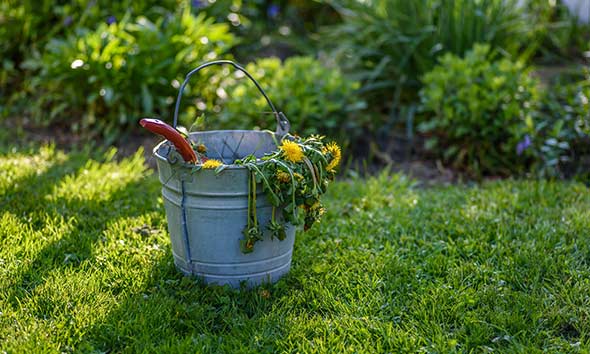Going After Weeds in the Off-Season
Weed seeds hide within the soil throughout the winter, so it’s important to get rid of and prevent weeds during the off season.

The seeds of many perennial weeds - including dandelions - can sprout in spring or fall.
Weeds aren’t just a spring and summer aggravation that shut down in fall when the weather turns cold. Some weeds actually prefer to sprout in the cooler soil of fall and even winter. They’ll lie dormant through much of winter – including beneath snow – before taking off at the first sign of brighter days and warming weather.
Known as “winter annuals”, these coolness lovers can even continue growing throughout winter in the warm climates of the South and Southwest. Some of the most common ones include henbit (Lamium amplexicaule), purple deadnettle (L. purpureum), chickweed (Stellaria media), hairy bittercress (Cardamine hirsuta), speedwell (Veronica spp.), annual bluegrass (Poa annua), Carolina geranium (Geranium carolinianum), prickly lettuce (Lactuca serriola), cheatgrass (Bromus tectorum), wild mustard (Brassica kaber), horseweed (Erigeron canadensis), catchweed bedstraw (Galium aparine), shepherd’s purse (Capsella bursa-pastoris), and annual sow thistle (Sonchus arvensis). After germinating in fall or winter, winter annual weeds grow quickly in spring and produce flowers that drop seed to start the cycle all over again. The “mother” plants then usually die by summer.
A few perennial weeds (ones that have winter-hardy roots and come back year after year) also may germinate in fall. Two of the most common are dandelions (Taraxacum officinale) and plantain (Plantago spp.). They should be dug out, getting deep roots and all, so they do not return the following season.

In fall, projects such as moving a hydrangea bush or planting bulbs bring buried weed seeds to the surface where they can sprout and grow.
A good way to control fall-sprouting weeds is by applying a granular weed preventer in late summer to early fall – before the year’s crop of winter annuals has a chance to sprout and grow.
Preen Extended Control™ Weed Preventer – the longest-lasting Preen preventer yet – gives up to six months of protection against winter annuals. Sprinkle the product over the beds and water it in to create a barrier against most winter annual weeds. Put on a second application in spring for protection against weeds that germinate in spring and summer for up to six months. Preen doesn’t kill existing weeds but stops new ones from sprouting or germinating from seed.
Weeds that already are up and growing can be pulled, dug, or spot-sprayed with an herbicide – especially perennial weeds, which aren’t affected by weed preventers once they’re up and growing.
Winter annuals are often at their worst after fall-planting projects. When soil is disturbed, weed seeds that have been dormant deep in the soil are stirred to the surface. They take advantage of disturbed ground: where gardeners have planted flower bulbs in fall, as new plants are planted, or existing ones are moved. They germinate and thrive as gardeners water their newly planted and transplanted plants. In both cases, Preen can be applied after the work is done to head off an immediate takeover by fall-sprouting weeds.